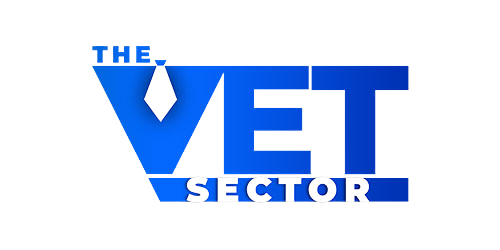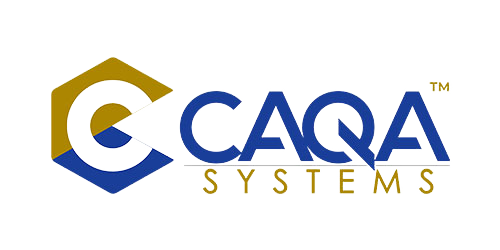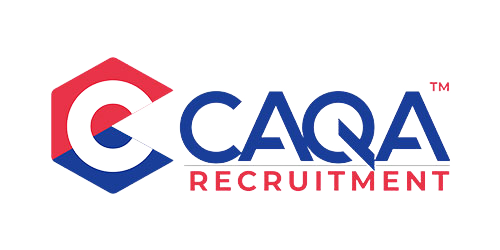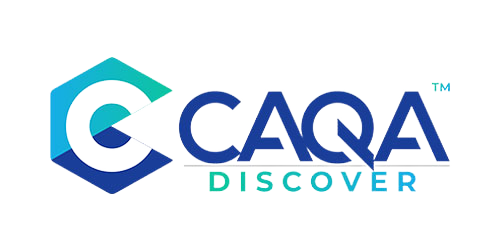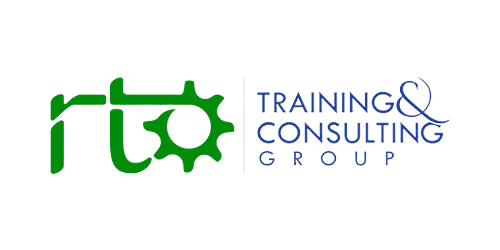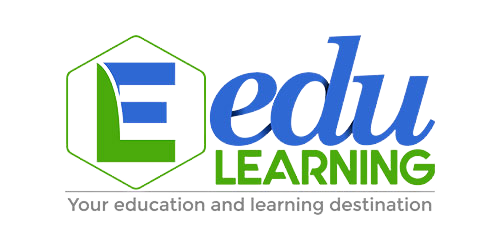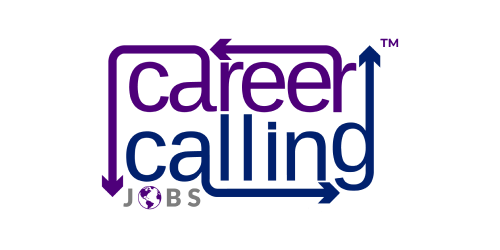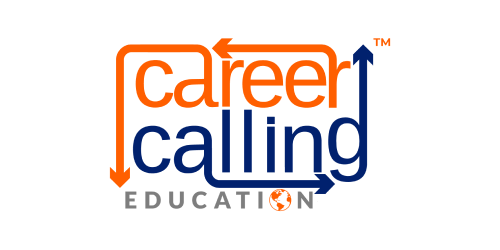Beyond the Classroom: Why Industry Connections Define Effective Vocational Education
Vocational Education and Training (VET) thrives on its ability to provide learners with practical skills and knowledge directly applicable to the workforce. However, in today's dynamic and ever-evolving labor market, achieving this alignment requires more than just well-designed curricula or modern facilities. It necessitates forging robust and enduring partnerships between VET institutions and industry stakeholders across all sectors. These collaborations represent the lifeblood of effective vocational training, ensuring that programs remain relevant, responsive, and ultimately successful in preparing graduates for fulfilling careers in a rapidly changing economic landscape. The power of these partnerships lies in their ability to bridge the gap between theory and practice, infuse real-world context into learning experiences, and create a seamless transition from education to employment.
As industries undergo unprecedented transformation through technological innovation, changing consumer demands, and evolving business models, the half-life of technical skills continues to shrink. What was cutting-edge five years ago may now be obsolete, while entirely new occupational specialisations emerge with minimal warning. In this context, static training programs quickly become outdated, producing graduates with skills mismatched to actual workforce needs. Only through deep, sustained engagement with the industry can VET providers navigate this shifting terrain effectively, continuously recalibrating their offerings to align with current requirements while anticipating future directions. This dynamic relationship between education and industry represents not just a beneficial enhancement to vocational training but its fundamental operating principle in a time of accelerating change.
Co-Creating Relevant Curricula Through Industry Expertise
The cornerstone of any successful VET program is a curriculum that accurately reflects current industry practices while anticipating emerging skill demands. Industry partners play a crucial role in this process by providing valuable insights into the evolving needs of their respective sectors, from construction and manufacturing to healthcare and digital services. Through collaborative curriculum development processes, industry experts contribute their practical knowledge to course design, review training materials, identify skill gaps, and validate competency standards. This dynamic exchange ensures that VET programs remain at the cutting edge, equipping learners with the precise skills and knowledge that employers truly value in today's workplace.
Effective curriculum collaboration takes many forms, each offering distinct benefits to the training process. Industry advisory boards provide strategic guidance on program direction and emerging skill requirements while technical working groups offer detailed input on specific competencies and assessment approaches. Subject matter experts from leading companies can contribute case studies, technical specifications, and operational insights that bring theoretical concepts to life with authentic workplace scenarios. Through these varied inputs, curricula evolve from academic constructs to living documents that genuinely reflect workplace realities and requirements.
This collaboration becomes particularly critical in rapidly evolving technical fields where formal qualification frameworks may lag behind industry practice. When new technologies, methodologies, or regulations emerge, industry partners can highlight these developments months or years before they appear in official training packages or accreditation standards. By incorporating these insights through supplementary modules, specialised certifications, or enrichment activities, VET providers can ensure that graduates possess both formally recognised qualifications and the cutting-edge capabilities employers actually seek when making hiring decisions.
Experiential Learning: The Power of Work-Integrated Training
Beyond curriculum development, industry partnerships create invaluable opportunities for work-integrated learning that transforms theoretical knowledge into practical capability. Experiential learning, where students apply their developing skills in authentic workplace settings, represents a hallmark of effective vocational education that distinguishes it from more abstract academic approaches. Industry partners facilitate this crucial component by offering structured work placements, internships, apprenticeships, industry projects, and mentoring relationships that connect classroom learning with real-world application.
These experiences provide multifaceted benefits to learners, developing not just technical competence but also the professional behaviors, workplace understanding, and contextual knowledge essential for career success. A plumbing apprentice working alongside experienced tradespeople learns not just technical skills but also customer communication, problem-solving approaches, and safety practices in unpredictable environments. A business student undertaking an industry project gains exposure to organisational dynamics, stakeholder management, and professional expectations that cannot be effectively simulated in classroom settings.
Work-integrated learning also addresses the classic "experience paradox" facing new graduates—the challenge of securing employment without prior experience in the field. By incorporating substantial workplace learning into the training process, industry partnerships create a bridge to that crucial first position, allowing students to develop an employment track record before graduation. When structured effectively, these experiences often lead directly to job offers, with employers using placement periods to identify promising talent for permanent positions while students demonstrate their capabilities in real work settings rather than just through credentials or interviews.
Enhancing Teaching Quality Through Industry Connections
Strong industry collaborations significantly enhance the quality of teaching and learning within VET institutions by keeping instructors connected to current workplace practices and technologies. By inviting industry professionals to guest lecture, conduct specialised workshops, participate in student assessment, and contribute to teaching materials, VET providers infuse their programs with real-world perspectives and practical insights beyond what even experienced educators might provide independently. This direct interaction with industry experts enriches the learning experience, motivates students by demonstrating the relevance of their studies, and provides valuable networking opportunities that can shape career trajectories.
These collaborations also support the professional development of VET instructors themselves, many of whom face the challenge of maintaining industry currency while focusing primarily on teaching responsibilities. Industry partnerships can facilitate instructor placement programs, where teaching staff periodically return to workplace settings to refresh their skills and understanding of current practices. Technical updating workshops led by industry specialists help educators master new technologies, methodologies, and compliance requirements. Co-teaching arrangements, where industry professionals and educational specialists deliver content together, create knowledge transfer opportunities that benefit both parties while providing students with complementary perspectives.
The most advanced partnerships sometimes involve personnel exchanges, with industry staff seconded to teaching roles while educators undertake industry projects. These arrangements create sophisticated knowledge-sharing ecosystems where the boundaries between education and industry become increasingly permeable. Rather than remaining separate domains that occasionally interact, education and workplace practice become integrated elements of a continuous learning environment that benefits students, instructors, and industry partners through multidirectional knowledge flows and capability development.
Creating Employment Pathways Through Strategic Relationships
The benefits of industry partnerships extend beyond the educational process to facilitate smoother transitions from training to employment for VET graduates. Employers who actively engage with VET institutions develop a deeper understanding of qualification frameworks, training methodologies, and graduate capabilities, allowing them to make more informed hiring decisions. These partnerships often create preferential recruiting relationships, where participating companies gain early access to promising candidates through placement programs, networking events, and direct referrals. Such arrangements benefit both employers, who can identify talent before it reaches the open market, and graduates, who gain opportunities to demonstrate their capabilities to potential employers in substantive contexts rather than just through application processes.
These strategic relationships frequently evolve into talent pipeline arrangements, where VET providers become primary sources of new employees for partner organisations. Companies may provide scholarship support, equipment donations, or other resources to programs that consistently deliver work-ready graduates with precisely the skills they require. Some partnerships involve customised training components specifically designed to prepare students for particular employers or industry subsectors, ensuring graduates possess not just general qualifications but the specific capabilities needed for targeted roles. These specialised pathways can include company-specific technologies, proprietary methodologies, or particular regulatory frameworks that give graduates immediate productivity advantages when entering these organisations.
The most sophisticated employment pathway relationships involve co-investment models, where industry partners contribute substantially to program development and delivery in exchange for priority access to graduates. These arrangements might include dedicated training facilities, specialised equipment, instructor secondments, or financial support that enhances program quality while aligning outcomes with specific workforce needs. Such deep partnerships create sustainable talent development ecosystems that serve both educational and industry objectives, ensuring training quality while addressing critical skill shortages in targeted sectors.
Building and Sustaining Effective Partnerships
Establishing and maintaining productive industry partnerships requires strategic approaches and dedicated resources rather than ad hoc interactions. VET institutions must actively cultivate relationships with industry stakeholders, demonstrating their commitment to providing high-quality training that genuinely meets workforce needs. This relationship building begins with thorough industry engagement planning that identifies priority sectors, potential partners, and mutual benefit opportunities. Successful partnership development requires establishing clear communication channels, fostering mutual trust, and demonstrating a willingness to adapt programs to evolving industry requirements rather than expecting employers to accommodate educational constraints.
Formalised governance mechanisms provide essential structure for sustainable partnerships, ensuring relationships transcend individual personnel and maintain continuity over time. Industry advisory boards with substantive input into program direction, regular consultation forums with documented feedback mechanisms, and joint working groups with specific improvement mandates all contribute to partnership longevity. Well-defined agreements that clearly articulate roles, responsibilities, and expected outcomes help prevent misunderstandings while establishing accountability frameworks that maintain partnership momentum through leadership changes or organisational restructuring.
VET institutions must invest in dedicated resources and infrastructure to support industry collaborations, recognising that effective partnerships require ongoing attention rather than periodic engagement. This includes employing industry engagement specialists who understand both educational and business environments, developing relationship management systems that track interactions and outcomes, and allocating budget for partnership activities like industry events, professional development exchanges, and collaborative projects. The most successful institutions create a culture where industry engagement is valued and prioritised at all levels, from strategic planning to classroom delivery, with performance frameworks that recognise and reward effective partnership development.
Overcoming Partnership Challenges Through Systematic Approaches
Despite their clear benefits, industry partnerships face several common challenges that require proactive management. Misaligned timeframes represent a frequent obstacle, with academic calendars and qualification development cycles operating on different schedules than business planning and technology implementation timelines. Overcoming this challenge requires flexible approaches to partnership activities with modular engagement opportunities that accommodate industry constraints while maintaining educational integrity. Rapid response mechanisms for curriculum updates, flexible scheduling for work-based learning, and streamlined approval processes for collaborative activities can significantly improve time alignment between educational and industry partners.
Resource limitations present another significant challenge, particularly for smaller training providers or industry partners with constrained capacity for non-core activities. Addressing this challenge requires creative approaches that maximise impact while minimising required inputs from all parties. Consortium models that spread participation across multiple employers can reduce the burden on individual organisations while providing learners with diverse experiences. Digital collaboration platforms can facilitate engagement without requiring a physical presence, while carefully structured projects can deliver both educational outcomes and business value, offsetting participation costs through tangible benefits.
Perhaps the most fundamental challenge involves the measurement and demonstration of partnership value, particularly over time. Without clear evidence of benefits, commitment from both educational and industry partners inevitably wanes as other priorities emerge. Developing robust evaluation frameworks that capture both immediate outputs (such as placement numbers or curriculum updates) and longer-term outcomes (including employment rates, skills relevance, and productivity impacts) provides essential evidence for continued investment in partnership activities. Regular review of these metrics, combined with qualitative feedback from all stakeholders, allows for continuous improvement of partnership approaches while maintaining enthusiasm for ongoing collaboration.
Expanding Partnership Horizons: Beyond Traditional Models
As the vocational education landscape evolves, partnership models continue to diversify beyond traditional approaches. Industry clusters that bring together multiple employers within a sector can create collaborative training initiatives that address workforce needs comprehensively rather than focusing on individual company requirements. These sector-wide approaches often involve industry associations, regional development organisations, and government agencies alongside educational institutions, creating ecosystem approaches to skills development that serve both current employers and emerging businesses within priority industries.
Technology-enabled partnerships increasingly transcend geographic limitations, allowing virtual collaborations between remote industry partners and VET providers. Digital platforms facilitate remote mentoring relationships, virtual industry projects, and online expert contributions that connect learners with industry perspectives regardless of location. These approaches are particularly valuable for regional and rural training providers, who can access industry expertise that might not exist locally, and for specialised fields where relevant industry partners may be nationally or globally distributed rather than concentrated in particular regions.
The most innovative partnership models increasingly blur traditional boundaries between education and industry, creating integrated learning ecosystems rather than distinct domains that occasionally interact. These approaches include:
-
Industry-based training academies where education occurs primarily in workplace settings
-
Educational commercial enterprises that provide industry services while training students
-
Joint venture arrangements where education and industry partners co-own specialised training facilities
-
Innovation hubs that combine education, research, and commercial activities in collaborative environments
-
Enterprise education models where students deliver commercial products and services under expert supervision
These integrated approaches recognise that in rapidly evolving fields, the traditional sequence of "learn, then work" is increasingly insufficient. Instead, they create environments where learning and working occur simultaneously, with knowledge flowing multidirectionally between educational institutions, industry partners, and learners engaged in authentic activities with real stakeholders and consequences.
Partnerships as the Foundation of VET Excellence
In today's rapidly evolving economy, strong industry partnerships represent not just a beneficial enhancement to vocational education but its fundamental operating principle. By collaborating closely with industry, VET institutions can develop cutting-edge curricula, provide valuable work-integrated learning experiences, enhance teaching quality, and facilitate seamless transitions from education to employment. These outcomes serve the core mission of vocational education—preparing work-ready graduates with directly applicable skills—while also benefiting industry partners through access to talent, input into training approaches, and cost-effective skill development aligned with specific workplace needs.
Building and sustaining these partnerships requires strategic approaches, dedicated resources, and commitment to continuous improvement rather than ad hoc engagement or superficial consultation. VET institutions that prioritise industry relationships, invest in partnership infrastructure, and continuously evaluate and refine their collaborative approaches position themselves for sustained excellence in a competitive educational landscape. By embracing the power of genuine partnerships, vocational education can fulfill its essential mission of empowering individuals with market-relevant skills while strengthening industries and driving economic growth through targeted workforce development that precisely addresses current and emerging skill needs.
The future of vocational education lies not in institutions that occasionally engage with industry but in learning ecosystems where education and workplace practice are seamlessly integrated, with continuous knowledge exchange driving both educational quality and industry advancement. By pursuing this vision through increasingly sophisticated partnership models, VET providers can ensure their continued relevance and effectiveness in preparing graduates for success in rapidly evolving workplaces where technical competence, adaptability, and practical capabilities remain the foundation of individual success and economic prosperity.








